The inability to keep productivity levels high for project-based work leads to extra stress and upset clients. Plus, people often struggle with task delegation and time estimates, which can throw other elements off track.
Fortunately, there are a variety of project management tools to try. Although many come with a fee, there are free options, too.
Should you splurge for one of the paid tools, or would a free possibility work well enough? Let’s take a detailed look at some of the choices. Then, you’ll be in a prime position to make a well-informed decision.
The Best Free Project Management Tools
If you feel restricted by a budget, don’t let that stop your productivity. These project management options have a feature-rich free layer that can help you design your plans till you can increase your budget.
1. MeisterTask
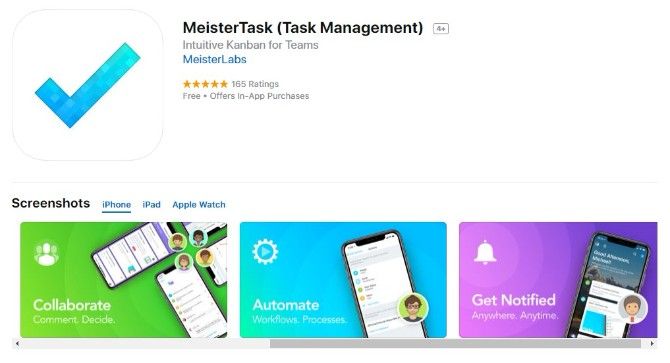
The free version of this project management interface takes a color-coded approach to helping you stay organized. See tasks in progress, completed assignments, things to review, and more—all on one dashboard.
You can customize what the main MeisterTask interface shows you. That makes it easy to view what happened since you last checked. Also, you can plan where to focus the day’s efforts.
Each assigned task can include all the details respective team members need to get it done. Ongoing conversation strings help project managers keep tabs on statuses. It’s possible to attach files as large as 20 MB too.
Download: MeisterTask for iOS | Android (Free, paid plans starting at $8.25/mo per user)
2. Asana
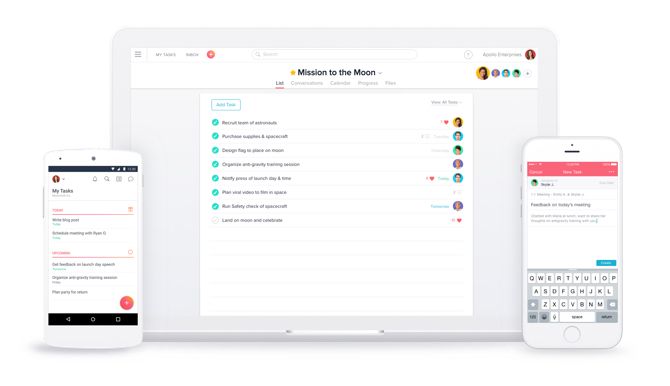
Asana strives for simplicity, so you can start using it effectively right away. You can view task assignments in the Asana interface or their inboxes. Priority levels assigned by project leaders help team members instantly know what to work on first.
Asana’s free tier accommodates teams of up to 15 people. It has a straightforward search functionality for speedily finding tasks, as well as a basic dashboard.
Download: Asana for iOS | Android (Free, paid plans starting at $9.99/mo per user)
3. Trello
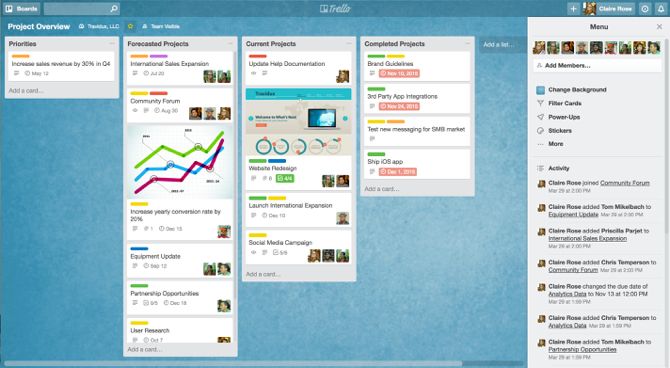
By using a card-and-board-based format, Trello is slightly different than some other tools. It can be designed like a Kanban workflow. Cards go onto Project boards, and you can create them for personal or business needs. After clicking on a card, fill it with details about due dates, team members, and related files.
Because Trello exists in the cloud, it’s simple to keep track of projects from anywhere. Get the scoop on the latest updates with synced content across all your devices.
Using Trello without paying allows for an unlimited number of boards, lists, and cards. You can upload attachments of 10MB or less, as a free user, too.
Download: Trello for iOS | Android (Free, $9.99)
4. Freedcamp
One of the perks of using Freedcamp for no charge is choosing a preferred task arrangement. For example, maybe you prefer the tried-and-true list format. Alternatively, if you’re a Kanban extension fan, creating task boards probably suits your work style better.
Freedcamp gives flexibility for creating a distinction between public and private tasks, too. If your personal life and work schedule are equally busy, that feature helps you stay on track.
Moreover, use the issue tracker, calendar, and social communication wall to maintain awareness during projects. Dealing with large tasks? Break them down into smaller subtasks to make them less daunting.
Download: Freedcamp for iOS | Android (Free, paid plans starting at $3.99/mo)
The Best Paid Project Management Tools
A small business can be well-served with a free tool or a free tier. But, these paid tools can scale up for any business requirement. The best ones come with collaboration features, task management, project scheduling, and document-sharing capabilities that enable them to work across departments.
1. Táve
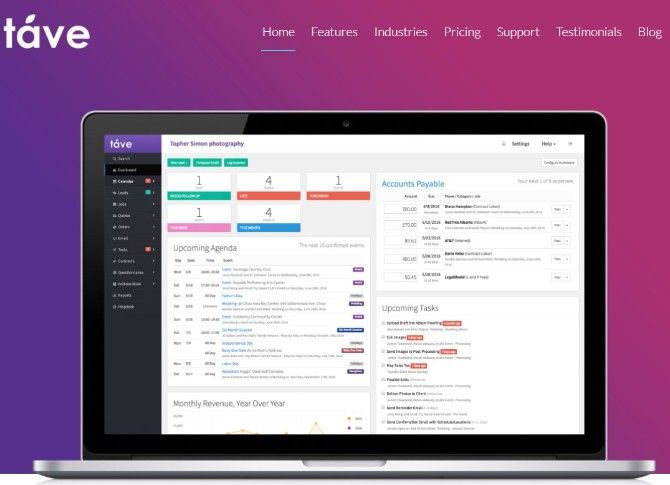
Aimed at creative professionals, Táve helps you have a hassle-free workflow with a handy checklist system. Besides offering text-based lists, it facilitates creating boxy, colorful charts for each project. Then, you can see responsibilities at a glance and stay on top of crucial deadlines.
Táve goes beyond project management, too. Send emails in advance and track them to ensure clients read the material. Use the lead management tool to capitalize on potential new work opportunities. Also, automate tasks such as sending meeting reminders, follow-ups for quotes, and invoice reminders.
Táve is a desktop interface. However, you can sync the tool’s calendars with your iOS gadget or Android phone.
Prices start at $12.49 per month. Specifics depend on the desired product tier and plan length. Users can avail themselves of a 30-day trial.
2. Casual
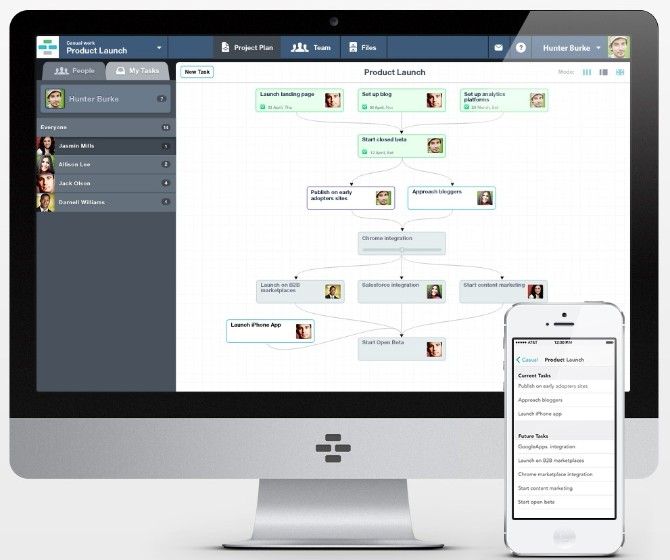
Visualizing a project’s progress often doesn’t involve thinking about assigning tasks and writing comments. Instead of offering lists or boards, Casual focuses on the causal relationships between steps in a process.
Make milestones first, then confer with team members and determine shared goal characteristics. Each milestone can have sub-processes that solidify the steps to completion. Factors like urgency and the number of people on a team affect the worker assignments.
Casual visually represents all these aspects in a flowchart. Instead of skimming a long list, people understand how their duties fit into the overall picture. If people prefer task lists instead, no worries. Casual automatically generates them while making the charts.
Team members get task lists delivered to them to promote quick accessibility. Even better, viewers see the responsibilities in the right order, which eliminates confusion. If project managers notice bottlenecks, they can rearrange processes to fix those issues.
Download: Casual for iOS | Android (Paid plans start at $7/mo)
3. ActiveCollab
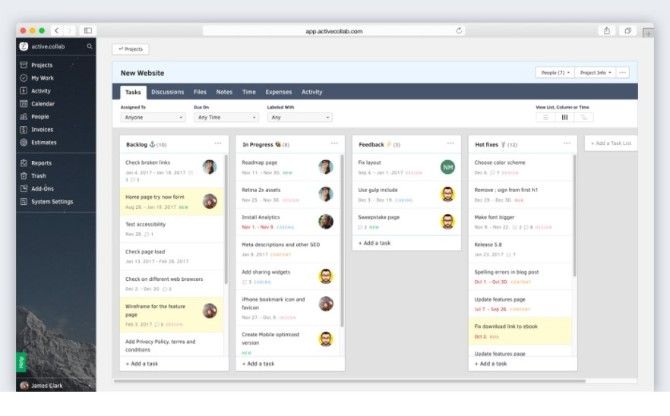
When using your email inbox as a project management tool falls short, try ActiveCollab. The tool works in the cloud like most of its competitors. You have the choice to install it on a company server, too.
Some project management applications only give dashboards to project managers. ActiveCollab provides one for every team member, preventing uncertainties about which tasks to do and when.
The app potentially solves accounting headaches as well. That’s because it has a built-in time-tracking feature. Hours spent on projects appear on team member dashboards, giving workers an easy way to track output.
A search feature with a task-filtering option reduces wasted time, too. Narrow down results by the assigned worker, a due date, or a label. Like most other project management helpers covered so far, ActiveCollab accommodates file uploads and task comments. You can hide communications from clients or let them see the messages and provide clarification.
Download: ActiveCollab for iOS | Android (Paid plans start at $25/mo)
4. Flow

With Flow, you organize tasks into lists or cards. This app also has a timeline feature with drag-and-drop functionality. Check it out as your project progresses, and change the start and end dates if necessary. A workgroups feature lets you assign tasks to several people working together.
There’s also a Catch-Up section of the dashboard, perfect for using after getting back from a break. It shows only the pertinent information for each task. It prevents getting overwhelmed by extraneous content. The Notification Feed does something similar by letting people know about recent information and when it happened.
Download: Flow for iOS | Android (Paid plans start at $6.40/mo per user)
Which Project Management Tool Is for You?
This list of four free options and four paid tools gives you a useful starting point. Still considering whether to pay or take the free route? Keep in mind that many of the complementary tools have substantial limitations.
For example, they may only work for projects with up to two people. Some no-cost tools also restrict the size of attachments or don’t offer integrations with other productivity apps.
If you like how a free service works, though, see if it has a paid plan. All those covered here have paid options, which increase the capabilities.
Maybe you’re working on a very simple project and don’t mind the basic functionality. Otherwise, it’s probably best to budget for one of the paid possibilities. Since many offer free trials and thorough feature descriptions, you don’t have to buy blindly.
Pair one of these tools with the right project management tips, and expect your team’s productivity to go up while confusion goes down.
from MakeUseOf https://ift.tt/2qRz6yA
via IFTTT
0 comments:
Post a Comment